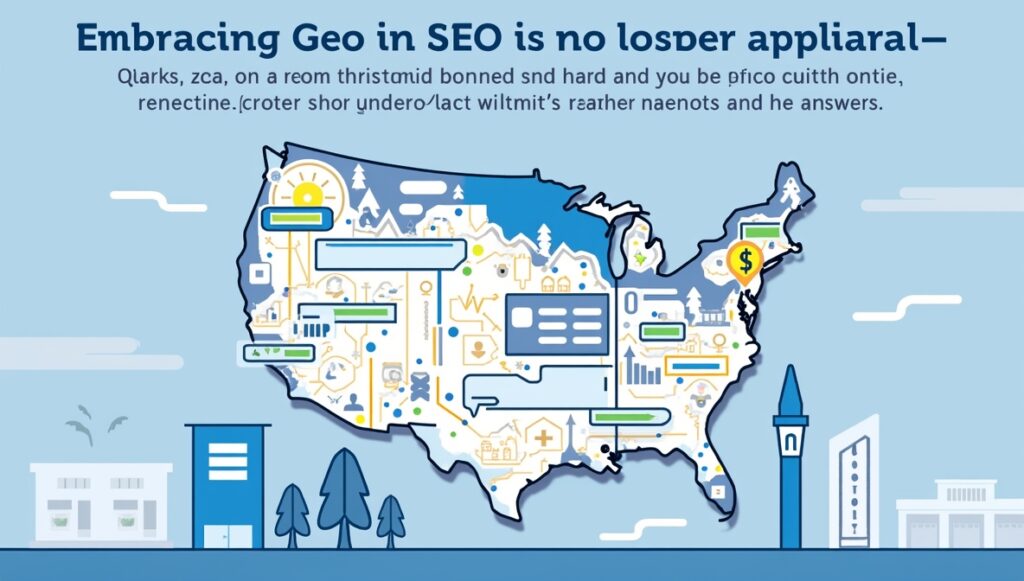
As AI reshapes the search landscape, the rise of Generative Engine Optimization (GEO) is changing how companies like Dust Digital Marketing Ltd. in Hong Kong attract new customers and build lasting visibility. This comprehensive guide explores the critical relationship between GEO and SEO, best practices for 2025, actionable strategies, a detailed comparison table, vital statistics, and a Q&A to empower your digital strategy.
Table: SEO vs. GEO — What’s the Difference?
| Aspect | Traditional SEO | GEO (Generative Engine Optimization) |
|---|---|---|
| Primary Goal | Rank higher in SERPs, drive organic traffic | Get cited and visible in AI-generated responses |
| Success Metric | Rankings, traffic, conversions | Citation prominence, brand presence in AI answers |
| Content Focus | Engaging, keyword-focused, user-centric | Factual, structured, entity-rich, citation ready |
| Technical Focus | Crawlability, site speed, mobile, indexability, schema | Entity markup, structured data, extractable formats |
| Measurement | Page views, Google Analytics, conversions | Citation count, AI visibility, referral quality |
| Key Optimization | Keywords, backlinks, internal links | Entities, citations, schema, authority from editorials |
| User Journey | Users click to site from search listings | Users get answers directly on search/AI interface |
| Authority Signals | Backlinks, domain and page authority | Editorial mentions, structured data, reputation |
Key Statistics & Figures — GEO in SEO (2025)

- 58.5% of Google searches end without a click (zero-click searches)
- 47% of all queries now have AI Overviews or generative answers shown
- 61% of AI signals for brand reputation come from editorial sources (not self-published content)
- 71% of consumers prefer voice search over traditional text input
- 53% higher citation chance for content with structured data elements
- Organizations with dual SEO+GEO strategies see up to 32% higher overall search visibility
- 20% of top-ranking SEO pages are cited in AI-generated answers—showing the growing gap
- By 2026, 50%+ of consumer search queries are projected to be AI-influenced
Unlocking GEO in SEO: Why It Matters
Traditional SEO is no longer enough for full-funnel digital exposure. AI-driven search platforms such as ChatGPT, Google’s SGE, and Perplexity now provide direct answers, often without sending users to traditional websites. GEO ensures your brand appears as a trusted source in these environments, giving you visibility where your audience gets their answers.
Best Practices for GEO in SEO – 2025
Entity & Data Optimization
- Define key entities: Make people, places, brands unmistakably clear.
- Use structured data: Add schema markup for products, organizations, FAQ, blog posts, etc.
- Cite statistics from reliable sources and format comparative data in tables.
- Publish original research and expert content.
Authority & Trust Signals
- Earn editorial mentions in respected publications, since AI weighs these more than self-promotion.
- Prioritize reputation management and consistent external validation.
Content Structuring
- Format for AI extraction: FAQs, tables, concise summaries, entity lists, step-by-step guides.
- Use clear headings, bullet points, and FAQ schema for your Q&A.
- Combine text, video, images, and audio to optimize for multimodal AI platforms.
Measurement and Refinement
- Regularly check your brand’s presence in AI-generated answers across platforms.
- Track both traditional metrics (traffic, conversions) and new AI KPIs (citations, AI traffic).
- Revise strategies every 3–6 months as search technology develops.
Why “Geo in SEO” Is Essential for Digital Marketing Firms
- Catch both search traffic and AI-assisted discoveries
- Expand authority on every platform (social, YouTube, Amazon, chatbots, etc.)
- Future-proof your online visibility as search becomes multi-platform and AI-dominated.
Frequently Asked Questions (Q&A)
Q1: Does GEO replace traditional SEO?
No, GEO complements SEO. While SEO maintains your Google and Bing rankings, GEO ensures you show up in AI-driven answers and voice searches. Both are essential for maximum reach in 2025. Focus on dual optimization to dominate both traditional and emerging search environments.
Q2: How is “geo in SEO” different from local SEO?
While “geo” often referred to geographic targeting, in 2025 “GEO” mainly refers to Generative Engine Optimization. Local SEO is about local map visibility and location-based searches; GEO is about being surfaced by AI engines as a credible source, regardless of the user’s exact location.
Q3: How can my business appear in AI-generated answers?
Structure your content for AI extraction. Use clear headings, answer common questions, implement structured data, cite authoritative sources, and invest in strengthening your brand reputation through trusted editorial exposure and partnerships.
Q4: How often should I update my GEO strategy?
AI landscapes change rapidly. Review and refresh your content and technical implementation every 3–6 months to maintain visibility and authority in new AI engines and features.
Q5: Can GEO help small businesses?
Yes—AI engines prize specific expertise and niche knowledge. Local or specialized businesses often have an advantage over large brands, especially when they deliver unique or deeply authoritative content and are mentioned across trusted local or industry-specific sources.
How to Integrate GEO with SEO: Action Steps
- Audit Your Visibility: Check your rankings, AI citations, and brand mentions.
- Restructure Content: Format for AI readability (tables, FAQs, concise explanations).
- Invest in Authority: Secure editorial mentions and reviews, and partnerships with influencers.
- Implement Markup: Use schema for all important content.
- Monitor AI Platforms: Test your appearance in ChatGPT, Google SGE, Perplexity, etc.
- Analyze & Improve: Use analytics to assess traditional and AI performance together.
Dust Digital Marketing Ltd. — Powering SEO & GEO for Hong Kong Businesses
At Dust Digital Marketing Ltd., we specialize in the synergy of search and AI. Our expert-driven strategies deliver maximum visibility across Google, Bing, chatbots, and emerging AI-driven channels. Whether you serve Hong Kong or a global audience, our mission is to keep your brand searchable, cited, and trusted everywhere it matters.
Conclusion

Embracing geo in SEO is no longer optional—the brands that adapt are the ones audiences will find, trust, and choose. In the AI-powered search era, the new rule is simple: Optimize for both the engines and the answers.
Ready to grow? Contact Dust Digital Marketing Ltd. for a strategy that empowers your business in both classic SEO and the future of GEO.

